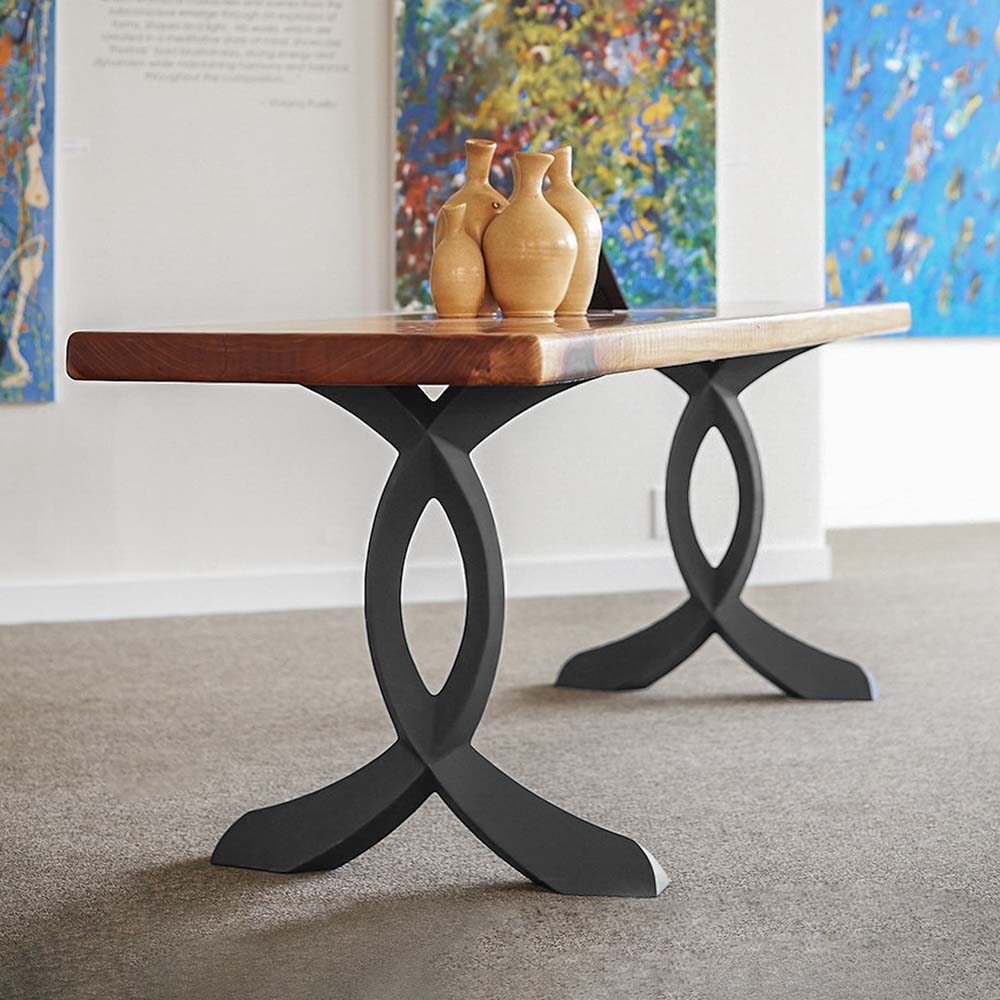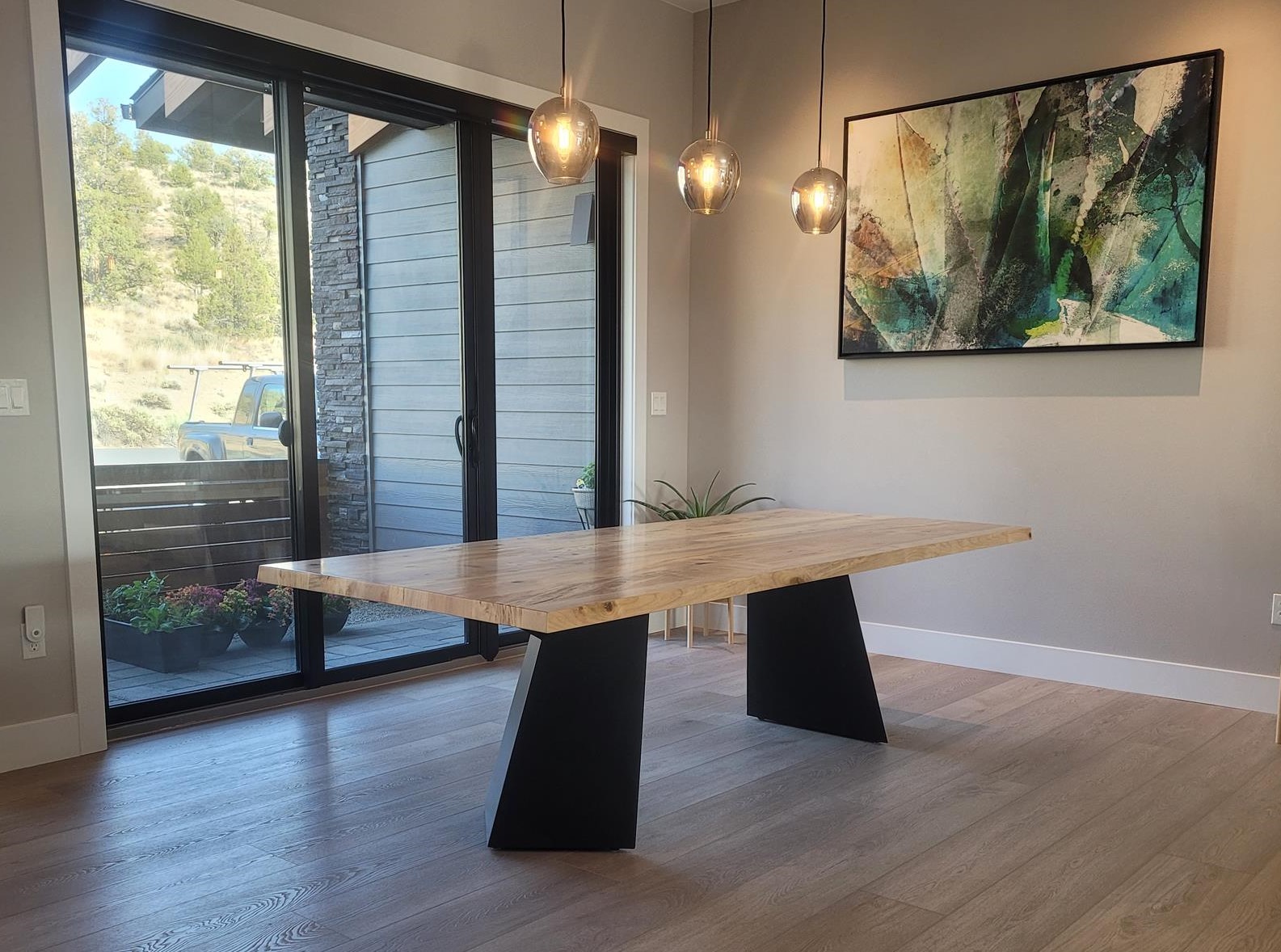How to Choose the Perfect Dining Room Table Legs for Your Home Design
How to Choose the Perfect Dining Room Table Legs for Your Home Design
Blog Article
Selecting the Perfect Table: What Styles Job Best for Your Home?
Choosing the perfect eating table for your home can be a nuanced procedure that stabilizes aesthetic appeals and capability. To navigate these options properly and find a table that really enhances your home, take into consideration the following aspects in detail.
Evaluating Your Room
Evaluating the dimensions and layout of your dining area is a critical first step in choosing the excellent dining table. Begin by measuring the length and width of the room, accounting for doorways, home windows, and other building attributes that can affect table positioning. This makes certain that your table not just fits yet also enables comfortable motion around it.
Think about the number of people you usually captivate. A table ought to fit your house's day-to-day requirements while using adequate versatility for occasional guests. As a regulation of thumb, allot at the very least 24 inches of table size per individual to guarantee a comfortable dining experience.
It's additionally crucial to maintain suitable clearance around the table. Ideally, there need to go to least 36 inches between the table side and wall surfaces or other furniture, allowing simple access and activity. For rooms where chairs with arms or extra storage devices like buffets are involved, enhancing this clearance to 48 inches is advisable.
Lights and environment play considerable roles too. Make certain that your table aligns with existing lights fixtures or prepare for sufficient lighting remedies. This thorough spatial evaluation warranties that your table not just fits physically yet likewise harmonizes with your room's total functionality and visual.
Popular Table Styles

Typical table often feature luxuriant information, rounded legs, and abundant timber coatings, stimulating a feeling of ageless sophistication. They are best for homes with traditional design or those wanting to add a touch of sophistication to their eating location.
Modern dining tables prioritize simpleness and tidy lines, commonly integrating materials like glass and steel. These tables are excellent for modern spaces, providing a streamlined and minimalist look that complements minimal style philosophies.
Rustic eating tables, on the various other hand, highlight all-natural materials and a handcrafted look - dining room table legs. They often include recovered wood and a distressed coating, producing a warm and welcoming environment. These tables function well in farmhouse-style homes or those seeking a cozy, natural feel
Industrial eating tables integrate raw materials such as steel and wood, usually showcasing an utilitarian visual. This style is fit for lofts or urban areas, adding a touch of tough beauty and toughness to the dining experience.
Each design offers unique advantages, making it important to choose one that lines up with your home's overall style and your individual preferences.
Product Selections
When picking a dining table, the selection of material plays a vital role in figuring out both the table's visual appeals and capability. Timber, metal, glass, and composite products each deal unique benefits and difficulties, making it vital to straighten the material with your home's design and way of life demands.
Wood is an ageless and functional alternative, available in ranges such as oak, walnut, and mahogany. Recognized Recommended Site for its durability and warmth, wood matches both typical and contemporary interiors. Nevertheless, it needs normal upkeep to prevent scratches and bending.
Steel tables, usually crafted from stainless-steel, light weight aluminum, or wrought iron, are praised for their contemporary charm and toughness. They are especially fit for industrial or minimalist settings however can be susceptible to dents and may feel cold to the touch.
Glass table bring an air of beauty and openness, ideal for smaller rooms as they produce an impression of more room. While simple to tidy, glass can be prone to spots and requires cautious managing to prevent chips and fractures.
Composite materials, such as MDF and plywood, offer cost-effective and customizable solutions, though they may lack the longevity of all-natural products. Choosing the best material guarantees your eating table is both a practical property and an aesthetic pleasure.
Shape and Size Factors To Consider
After identifying the appropriate material for your eating table, the next factor to consider is selecting the ideal shape and size to fit your room. On the other hand, rounded tables foster a feeling of affection and are outstanding for smaller sized dining locations, encouraging discussion by eliminating corners and making every person feel similarly consisted of.
As a rule of thumb, allocate at least 24 inches of table width per person to ensure comfortable eating. In addition, take into consideration the table's clearance space: there should be at least 36 inches in between the table side and the wall surfaces or various other furnishings. Prolonging tables provide versatility if you frequently host larger gatherings, giving added seats when required without occupying extra space more info here daily.
Matching Your Design
Picking a table that balances with your existing decor is crucial in producing a cohesive and welcoming area. Begin by assessing your present interior decoration style, whether it be modern, standard, rustic, or eclectic. The table must complement the total this article visual, not complete with it. For example, a streamlined, minimalist table with tidy lines is suitable for a contemporary home, while a vintage, luxuriant table fits a more conventional setup.
Shade and material are equally substantial. If your decoration includes warm tones and natural products, take into consideration a wooden table to improve the natural feel. Alternatively, a glass or steel table may be better suited in a space dominated by great colors and industrial elements. Take notice of the coating, as it should mirror other furniture and components to keep consistency.
Appearance plays an essential role. A rough-hewn, reclaimed wood table can add character to a rustic room, while a polished marble surface area can boost a luxurious dining location. Think about the scale and proportion of the table in relation to the area dimension and existing furniture. A well-matched dining table not only enhances visual appeal but additionally improves the general dining experience.

Final Thought
Choosing the suitable eating table requires cautious factor to consider of area, design, products, form, and dimension. Standard tables enhance traditional insides with abundant timber coatings, while modern tables suit contemporary settings with glass and metal.
Report this page